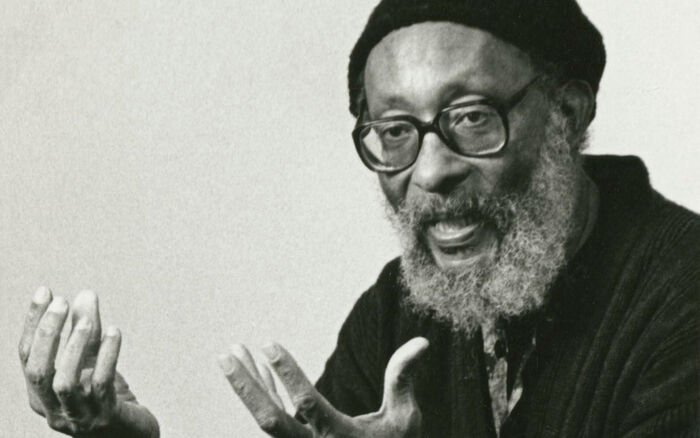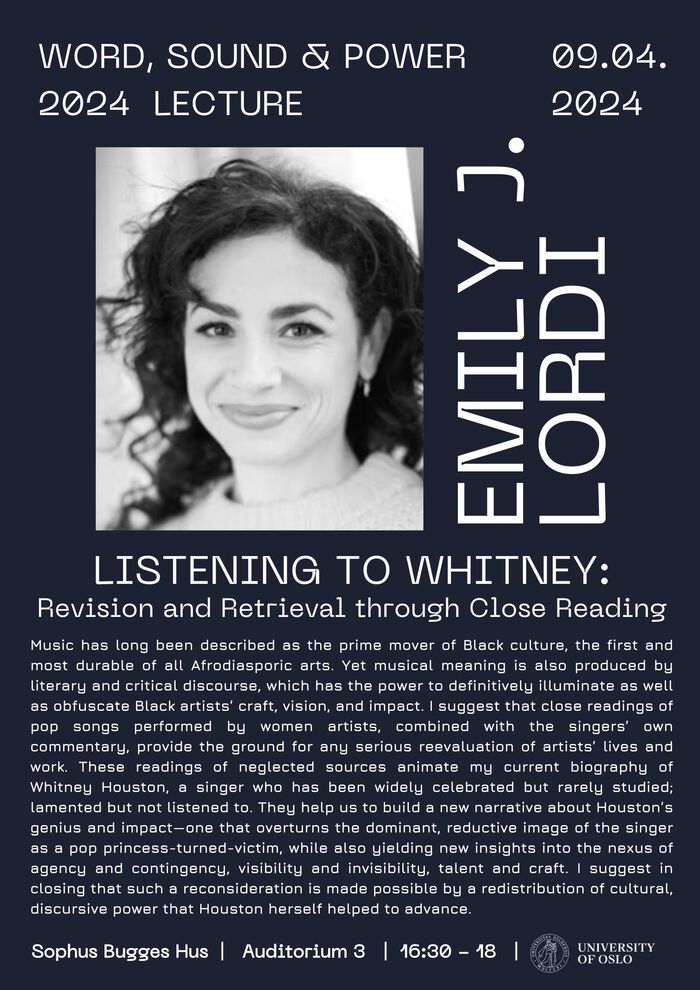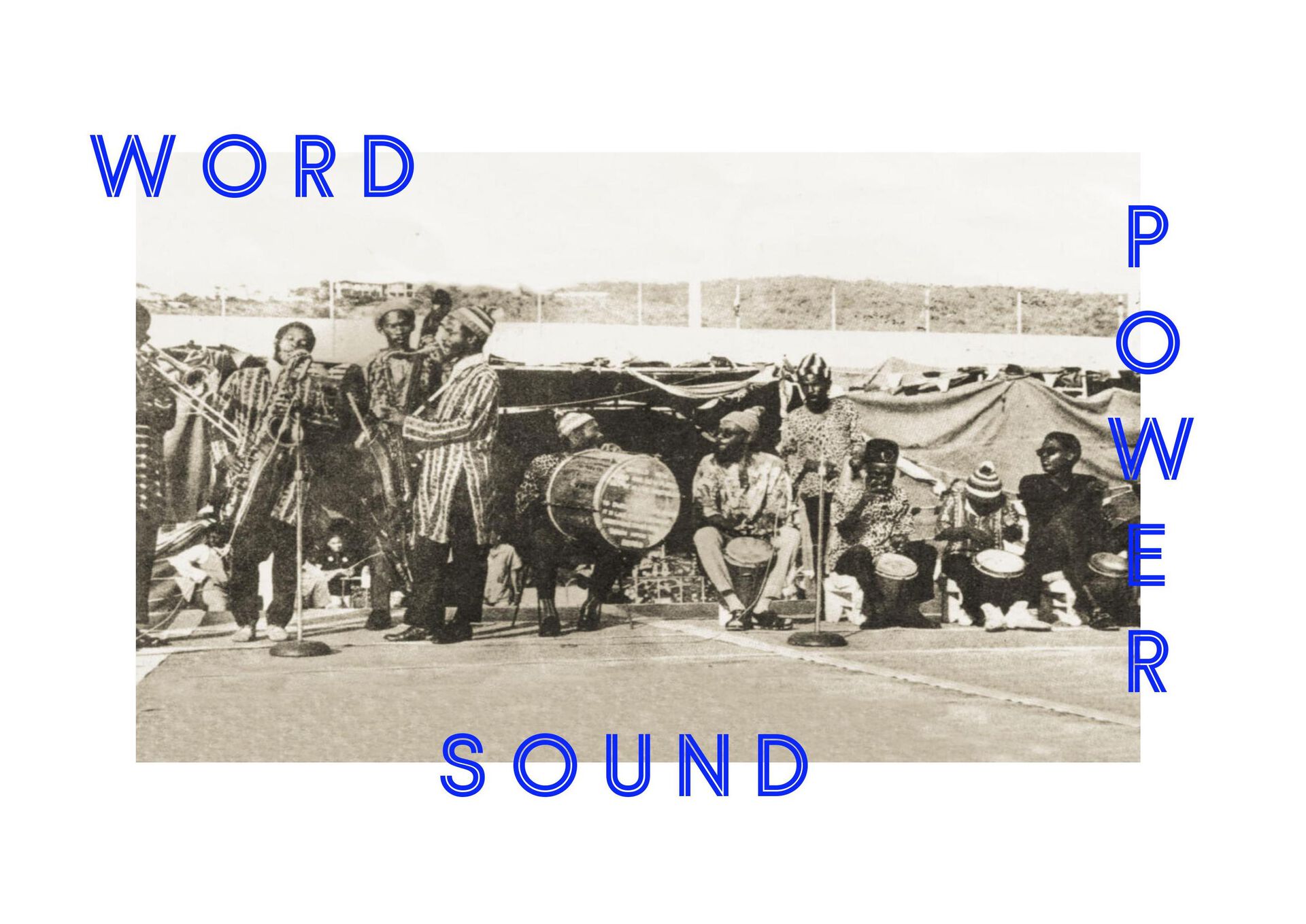In an interview from 1966, the musician John Coltrane outlines a clear relationship between rhythmic patterns and the possibility of social and intellectual change: "I think music is an instrument. It can create the initial thought patterns that can change the thinking of a people."
Here Coltrane describes the power of sound, a power that is somewhat indirect. The musician invested in change creates new patterns of sound that resonate in the consciousness of listeners. Given the right conditions, the rhythmic and melodic patterns in the music can generate similar changes in the intellectual patterns of a broader public. Thus, a musical shift, Coltrane suggests, can lead to a shift in public consciousness that lays the grounds for social change, i.e. a desire and willingness to transform existing social relations. (Given that the interview was conducted in 1966, it’s clear that Coltrane is thinking, at least partially, about the black freedom struggle being led by figures like Stokely Carmichael, Martin Luther King, Jr., and Huey Newton.)
The relationship that Coltrane sets out in this interview is important and insightful, not only for understanding Coltrane’s music, but also for understanding the significance of “patterns” in African American and Afro-diasporic art. In Coltrane’s music, as in most of jazz, there is a sharp challenge – sometimes explicit and sometimes subtle – to existing patterns of music, thought, and social structure. For much of his career – and certainly in 1966 - , Coltrane was considered to be an avant-garde artist, one motivated to challenge and break down existing musical patterns in ways that sometimes seemed intense, violent, and even hateful to some critics. (One famous review labeled Coltrane’s music as “anti-jazz”). As hyperbolic as some of the criticism of Coltrane was, it did put its finger on an insistently liberatory impulse in Coltrane’s music. According to James Baldwin, “jazz is an attempt to checkmate the European conception of the world,” and in Coltrane’s music the rhythmic and melodic patterns strive to create a sound-world antithetical to Eurocentric assumptions of symmetry, disembodied intellectuality, and notions of the racial inferiority of black and brown people. The music strives for another world and it does so through sound.
Apart from the famous chanting of the words “a love supreme” in Coltrane’s masterpiece from 1964, his music is purely instrumental, striving to create intellectual change by way of sonic patterns rather than overt linguistic messages. This aspect of Coltrane’s music is exemplary of a central tendency in African American and Afro-diasporic art, the tendency to exploit the power of sound. This tendency is central in Afro-diasporic music, but also in Afro-diasporic poetry and writing as well. In the work of the most important poets in the Afro-diasporic tradition, the power of sound is conjugated with the power of the word. What this means is that for poets like Langston Hughes, Kamau Brathwaite, and Linton Kwesi Johnson, the sonic structure of words and syllables is at least as important as the denotative content of the words themselves. Just as Coltrane was working with sonic patterns of rhythm to reconstruct social consciousness, Afro-diasporic poets tend to work heavily with the sonic patterns of language, utilizing the timbre and sound of words, and the rhythm and cadence of patterned words and syllables, to restructure the poetic and the social world, striving for new forms of consciousness.
One of the most interesting of these poets is the late master Kamau Brathwaite, a fantastically prolific and fantastically inventive writer and critic. Brathwaite was born and raised in Barbados, attended university in the U.K. and Jamaica, before taking up significant educational posts in Ghana and the United States. Brathwaite was heavily influenced by jazz, including John Coltrane. Brathwaite wrote one of the most important essays on the relationship between literature and jazz (“Jazz and the West Indian Novel”, 1967), and references to jazz and different jazz musicians saturate his poetic texts. In many ways, Brathwaite is trying to do in his poetry what Coltrane was trying to do in his music: to create sonic and linguistic patterns that aim at liberatory change through the transformation of readers’ consciousness.
In a seminal work from 1981, History of the Voice, Brathwaite writes of the importance of language and voice in any attempt to move away from the dominance of colonial and Eurocentric thought patterns. In this essay, Brathwaite deals with the notion of “syllabic intelligence,” a form of thinking about the world directly linked to the sound and rhythm of different patterned combinations of syllables. He contrasts the imposed colonial tradition of poetry from the U.K with the emergence of a new tradition of language attuned to the physical and social reality of the Caribbean. He does discuss the semantic aspects of each poetic tradition, but the really important aspect of poetry for Brathwaite is its materiality and rhythm. He writes that “What is even more important” than specific words and their semantic content, is “the actual rhythm of the syllables, the very body work, in a way, of the language”. When Brathwaite refers to the “body work” of language, he is referring to those aspects of language that most approximate music, i.e. the timbre and sound of the words, and the rhythms created by their combinations and the combinations of syllables within them. This is what creates a certain kind of “syllabic intelligence”.
In History of the Voice, Brathwaite points out that colonial education has imposed a kind of Eurocentric model on the Caribbean that is no aid in coming to terms with the local environment. This educational system works by importing both the poetic rhythm and the worldly vision of texts by Shakespeare, George Eliot, Jane Austen and others. These poetic models stunt the development of Caribbean intelligence by tyrannically insisting on semantic and syntactic patterns alien to Barbados and to the rest of the Caribbean. Colonial education is thus a form of mis-education, one that promotes a certain form of alienation from the local Caribbean environment. Brathwaite’s most famous example concerns snow: the way in which colonial education gave its students a whole set of literary texts dealing with the falling of snow, but nothing that dealt with the force of the hurricane, a phenomenon that appears every year in the Caribbean. The canon of English texts cumulatively inculcates in students a “perceptual model” that makes them more conscious of snow than of the most powerful local instantiation of nature.
This mis-education away from local experience is about words, but for Brathwaite, it is more importantly about syllabic patterns and rhythms. He speaks of the “tyranny of the pentameter,” a syllabic pattern well-suited for snowfall, but incapable of grasping the natural and social forces of the Caribbean. Brathwaite writes that “the pentameter remained, and it carries with it a certain kind of experience, which is not the experience of a hurricane. The hurricane does not roar in pentameter.” So, despite the brilliance of Shakespeare’s work, its reliance on pentameter fosters a syllabic intelligence ill-suited to apprehending the local experience of the hurricane.
Now, Brathwaite is certainly not saying that Caribbeans trained in colonial schools can’t hear the hurricane. That would be absurd. What he is suggesting is that being trained exclusively in pentameter inhibits the kind of intelligence that can cognize the hurricane as a central part of an environmental and cultural cosmos. Intelligence, poetic or otherwise, is the capacity to productively connect intellectual concepts and habits of mind to the surrounding world.
Brathwaite suggests that a proper form of syllabic intelligence must deliver a rhythmic pattern that mimes or echoes one’s social and natural environment. To intellectually apprehend the hurricane means bending one’s language towards its rhythms as a first step towards constructing an intellectual framework in which the hurricane can take its place as meaningful part of one’s experience of place. And the tendency of colonialism is to frame the colonies as non-places, as appendages of the colonial center that can only be understood as lacking essential attributes of the metropole. Brathwaite’s form of syllabic intelligence countermands this tendency. His poetry plays with syllabic and rhythmic patterns, shifting consciousness in ways that allow readers to grasp different elements of the world and its significance, including the hurricane. Brathwaite works to do justice to the rhythms of the hurricane, which means doing justice to the Caribbean as a place just as central to world history and just as full of forms of intelligence as the U.K. or any other part of Europe.
The implications of what Brathwaite suggests about the weight of syllabic patterns is immense: he is pointing out to us something crucial about intelligence and about its necessary embodiment in linguistic patterns. Intelligence, Brathwaite implies, is inseparable from the material sound and patterns that make up language. It is not a disembodied rational power living inside one’s head; it is a physically embodied mode of apprehending the world that lives in and through the physical sound and rhythm of the way language is spoken and written. This means that it has a rhythm, a pattern of connecting different syllables, different concepts, and different aspects of experience. To shift the rhythm of poetry or music, then, is to shift consciousness, to create a different form of intelligence. This is, of course, exactly what Brathwaite aims to do in his poetry; to create a different kind of syllabic intelligence.
Following the imperatives of jazz (and of other Afro-diasporic musical forms), Brathwaite exploits the connection between rhythmic sound patterns and consciousness of the world. His poetics pursue the possibility that the right re-arrangement of syllabic patterns can shift consciousness and allow readers to intellectually grasp the world in a different way. A new pattern is a new vision, and Brathwaite’s immense oeuvre is a sustained pursuit of a new vision of the world.
‘Vision’ is perhaps not the best word here, for Brathwaite’s imaginative refiguring of the world has both sound and music at its center. A new sound is a new world, one might say, and Brathwaite has created an immensely inventive soundscape full of intellectual and affective energies that push to restructure the world in ways that resonate with this soundscape. Central to this endeavor has been Brathwaite’s engagement with the liberatory sound patterns of John Coltrane and of other key figures from the jazz tradition: Duke Ellington, Coleman Hawkins, Bessie Smith and others.
Bruce Barnhart is an Associate Professor of American Literature and Culture at the University of Oslo. His research focuses on African American literature, jazz, and theories of temporality.




